Introduction: A Flemish Master in Rome
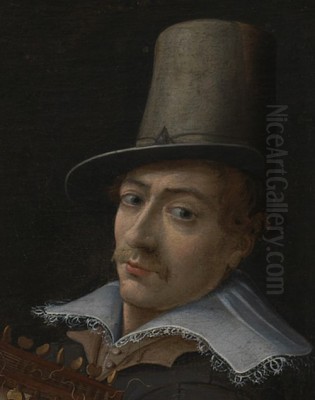
Paul Bril (1554-1626) stands as a pivotal figure in the history of European landscape painting. Born in the bustling artistic hub of Antwerp, then part of the Spanish Netherlands, Bril spent the majority of his highly successful career in Rome. He became one of the most sought-after landscape specialists in the Eternal City, skillfully merging the detailed naturalism of his native Flemish tradition with the idealized grandeur and luminous atmosphere of Italian art. His work not only earned him prestigious papal commissions but also profoundly influenced generations of artists from both Northern and Southern Europe, effectively acting as a crucial bridge between distinct artistic worlds during the transition from late Mannerism to the early Baroque.
Early Life and Artistic Formation
Paul Bril was born into an artistic family in Antwerp in 1554. His father, Matthijs Bril the Elder, was a painter, though little is known about his work. More significantly, Paul's elder brother, Matthijs Bril the Younger (c. 1550-1583), also became a painter, specializing in landscapes. It is likely that Paul received his initial artistic training within the family circle before potentially studying further.
Sources suggest Paul studied with the painter Damiaen Ortelius in Antwerp (not Brussels as sometimes cited, though Ortelius had connections to the famous cartographer Abraham Ortelius). Antwerp, at this time, was a major center for art production and trade, fostering a rich environment for young artists. The prevailing style often incorporated elements of Mannerism, characterized by elongated figures, complex compositions, and sometimes fantastical elements, particularly visible in the world landscapes pioneered by artists like Joachim Patinir earlier in the century.
The Journey South: To Rome
The allure of Italy, particularly Rome, was immense for Northern European artists during the 16th and 17th centuries. Rome was not only the center of the Catholic Church, offering vast opportunities for patronage, but also the repository of classical antiquity and the home of Renaissance masters like Raphael and Michelangelo. For landscape painters, the Italian countryside, with its dramatic light, ancient ruins, and picturesque vistas, offered endless inspiration.
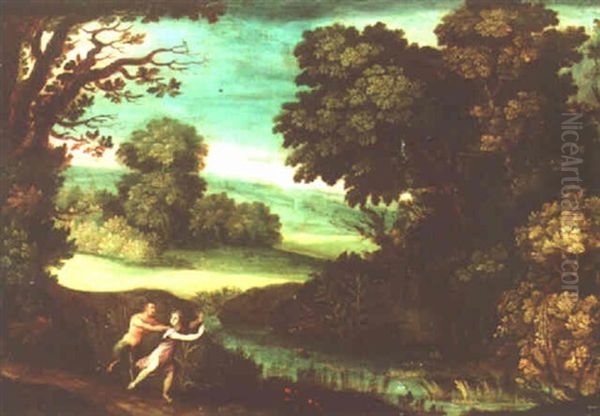
Following in the footsteps of many compatriots, Paul Bril travelled south. His brother Matthijs had already established himself in Rome by the mid-1570s, working on significant fresco projects, including commissions in the Vatican. Encouraged by his brother's success and likely seeking greater opportunities, Paul arrived in Rome around 1574 or shortly thereafter, deciding to settle there permanently. This move marked the beginning of a long and fruitful career far from his homeland.
Establishing a Career in the Eternal City
Rome in the late 16th century was a vibrant, international artistic center. Bril quickly integrated into this environment. Initially, he worked closely with his brother Matthijs. The Bril brothers collaborated on several projects, with Matthijs often handling the larger fresco work and Paul potentially assisting or focusing on smaller easel paintings. Their Flemish origins likely made them stand out, but their skill in landscape, a genre gaining increasing appreciation, ensured their success.
The Roman artistic scene was dominated by the spirit of the Counter-Reformation, which encouraged religious art that was clear, persuasive, and emotionally engaging. While landscape was not the primary focus of religious narrative, it played an increasingly important role in setting the scene and conveying mood, particularly in fresco cycles decorating papal apartments and the villas of cardinals and the aristocracy.
Collaboration and Continuation: The Legacy of Matthijs Bril
Tragedy struck the Bril family when Matthijs died prematurely in 1583. This event, however unfortunate, propelled Paul into a more prominent role. He took over some of his brother's unfinished commissions, demonstrating his capability and reliability to patrons. This included significant work in the Vatican Palace, specifically frescoes in the Torre dei Venti (Tower of the Winds), where Matthijs had been employed.
Paul successfully completed these projects, solidifying his reputation. He continued to receive important commissions, working for successive Popes, including Gregory XIII, Sixtus V, Clement VIII, and Paul V. His ability to manage large-scale fresco projects, often incorporating vast landscapes, made him an invaluable asset in the decoration programs of the time.
Forging a New Landscape Style: North Meets South
Paul Bril's unique artistic contribution lies in his synthesis of Northern and Southern European landscape traditions. He arrived in Rome with a grounding in the Flemish approach, often characterized by meticulous attention to detail, a tendency towards high viewpoints, and a somewhat additive approach to composition, building scenes element by element. Early works sometimes retain these features, along with the cooler, more saturated color palettes typical of Northern Mannerism.
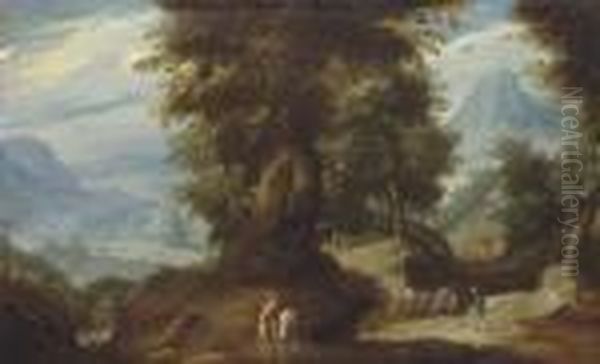
However, his long immersion in the Italian artistic environment led to a significant evolution. He absorbed the lessons of Italian art, particularly the burgeoning interest in idealized landscape and the effects of light and atmosphere pioneered by Venetian painters and developed further by artists in Rome. He encountered the work of Italian contemporaries who were shaping the future of landscape painting.
Influence of Italian Masters: Carracci and Elsheimer
Two artists, in particular, seem to have had a significant impact on Bril's development in Rome: Annibale Carracci and Adam Elsheimer. Annibale Carracci (1560-1609), a key figure in the transition to the Baroque, was instrumental in developing the 'ideal landscape'. His paintings, like the famous lunettes for the Palazzo Aldobrandini, presented nature as ordered, harmonious, and imbued with a classical serenity, often incorporating mythological or religious figures seamlessly into the setting. Bril absorbed Carracci's classicizing tendencies, moving towards more balanced compositions and a greater sense of atmospheric unity.
Adam Elsheimer (1578-1610), a German painter active in Rome from 1600, became a close friend of Bril. Elsheimer was renowned for his small, intensely poetic paintings, often on copper, characterized by innovative treatments of light, particularly nocturnal scenes and twilight effects. Bril and Elsheimer influenced each other; Bril sometimes provided landscape backgrounds for Elsheimer's small figures, and Elsheimer's sensitivity to light undoubtedly encouraged Bril's own explorations of atmospheric effects. This interaction highlights the collaborative and mutually influential nature of the artistic community in Rome.
Characteristics of Bril's Mature Style
Bril's mature style successfully integrated these diverse influences. His landscapes became known for their convincing depiction of depth, achieved through careful atmospheric perspective – typically employing a formula of warm brownish foregrounds, greenish middle grounds, and hazy blue distant mountains, a convention he helped popularize. He mastered the rendering of natural light, capturing the golden glow of the Italian sun or the cool clarity of morning air.
While his landscapes often depicted recognizable Italian scenery – the Roman Campagna, coastal views, Tivoli's waterfalls – they were rarely straightforward topographical records. Instead, he created idealized or composite views, often described as vedute ideate (idealized views) or capricci (architectural fantasies, though Bril's work leans more towards idealized nature than purely architectural invention). These scenes frequently included picturesque elements like ancient ruins, rustic bridges, and small figures (often biblical, mythological, or pastoral) that added narrative interest but remained subordinate to the landscape itself.
Major Fresco Commissions: The Vatican and Beyond
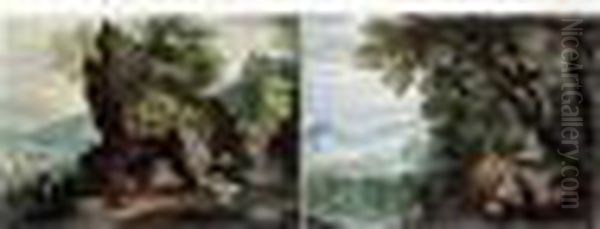
Paul Bril's reputation earned him some of the most prestigious commissions available to a landscape painter in Rome. His work in fresco was extensive. Following his completion of Matthijs's work in the Torre dei Venti, he continued to work in the Vatican. One of his most celebrated fresco projects was in the Sala Clementina of the Vatican Palace, executed during the papacy of Clement VIII around 1600-1602.
Here, Bril collaborated with the Alberti brothers, Cherubino and Giovanni. Bril was responsible for the large landscape vistas depicting the Martyrdom of St. Clement. These expansive scenes, integrated into the complex decorative scheme of the hall, showcased his mastery of large-scale landscape composition and his ability to create immersive, atmospheric environments. He also painted frescoes in other Roman churches and palaces, such as Santa Cecilia in Trastevere, the Palazzo Rospigliosi, and the Casino dell'Aurora for Cardinal Scipione Borghese.
Easel Paintings and Cabinet Pictures
Alongside his large-scale fresco work, Paul Bril maintained a prolific output of smaller easel paintings, often executed on canvas or, characteristic of many Northern artists working in Italy, on copper panels. These cabinet pictures allowed for a higher degree of refinement and detail. They were highly sought after by collectors throughout Europe.
His subjects ranged widely within the landscape genre. He painted coastal scenes and imaginary harbours, often filled with bustling activity and detailed ships, such as the work simply titled Seaport, noted for its vibrant color and light. Pastoral landscapes featuring shepherds and their flocks were common, evoking a sense of Arcadian peace. Mythological scenes set in lush landscapes, like his Landscape with Pan and Syrinx, allowed him to combine narrative with his love for depicting nature. Views incorporating ancient ruins were particularly popular, catering to the contemporary fascination with classical antiquity.
Collaborations with Figure Painters
The practice of collaboration between specialist painters was common during this period. As a renowned landscape specialist, Bril frequently collaborated with figure painters who would add the narrative elements to his scenic backgrounds. This division of labor allowed each artist to focus on their strengths, resulting in works of high quality and appeal.
His collaboration with the German painter Johann Rottenhammer (1564-1625) is well-documented. Between roughly 1589 and 1595, Rottenhammer, then based mainly in Venice, would paint the figures (often mythological or religious) and send the compositions or panels to Rome, where Bril would add the landscape settings. This long-distance partnership underscores the interconnectedness of the European art world.
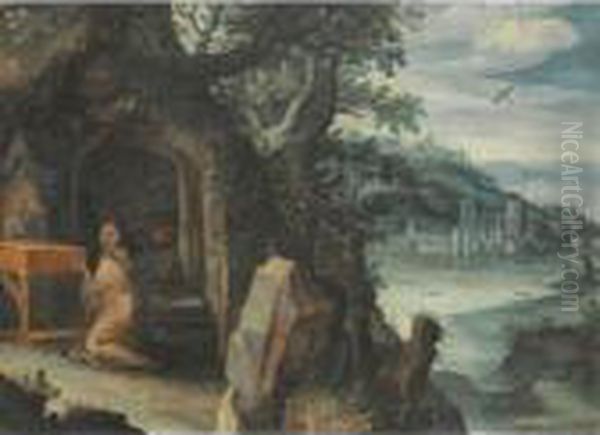
Bril also collaborated with his friend Adam Elsheimer, as mentioned earlier. Furthermore, he worked with the highly influential Flemish painter Jan Brueghel the Elder (1568-1625) during Brueghel's time in Rome in the 1590s. Both artists shared a Flemish heritage and an interest in detailed landscape, though their styles diverged. Their collaborations likely involved Bril providing expansive backgrounds for Brueghel's meticulously rendered figures and foreground details.
Even the great Peter Paul Rubens (1577-1640), who spent time in Italy between 1600 and 1608, interacted with Bril. While direct collaboration on single canvases might be debated, their mutual respect is evident. Rubens admired Bril's landscapes, and Bril's work provided a foundation upon which Rubens would build his own dynamic Baroque landscapes later in his career. Conversely, Rubens's powerful figure style and dramatic compositions may have influenced Bril's later works.
Master Printmaker: Etchings and Engravings
Paul Bril was not only a painter but also a skilled printmaker, primarily working in etching. His prints, mostly landscapes, helped to disseminate his style and compositions more widely. They often mirrored the themes of his paintings: idealized Italianate scenery, ruins, coastal views, and pastoral scenes.
His etchings display a fluid, painterly line and a keen sensitivity to light and atmosphere, translating the qualities of his paintings into the graphic medium. An interesting and whimsical detail found in some of his prints is the inclusion of a small pair of spectacles. This served as a visual pun on his surname, as "Bril" means "glasses" or "spectacles" in Dutch and Flemish. This signature device speaks to his wit and his attention to even small details within his compositions.
Evolution Towards Classicism
Over his long career, Bril's style continued to evolve. While his early work retained Mannerist elements and a certain Northern particularity, his later paintings, from roughly 1605 onwards, show a distinct move towards a more classical and serene vision of nature. This shift paralleled the broader development of landscape painting in Rome, influenced by Annibale Carracci and the emerging ideals of the Baroque.
His later landscapes often feature calmer, more balanced compositions, a more unified and gentle treatment of light, and a greater sense of spatial harmony. The dramatic elements sometimes found in his earlier work give way to a more tranquil, contemplative mood. These works anticipate the fully developed ideal landscapes of the next generation, particularly those of Claude Lorrain.
Bril's Enduring Legacy and Influence
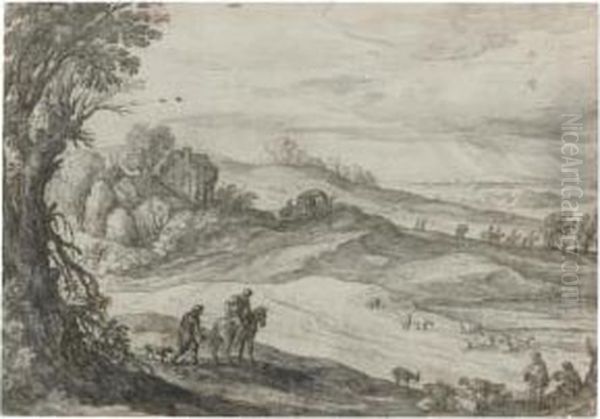
Paul Bril died in Rome in 1626, having spent over fifty years in the city. His impact on the development of landscape painting was profound and far-reaching. He was a leading figure among the Netherlandish artists working in Rome, and his studio attracted pupils and followers. Among those associated with his circle or influenced by him were Willem van Nieulandt II, who married Bril's daughter, and possibly Agostino Tassi, who would later become the teacher of Claude Lorrain. The German painter Goffredo Wals also worked in the circle of Tassi and was influenced by the Bril/Elsheimer approach to light and landscape.
Bril's most significant legacy lies in his influence on the course of 17th-century landscape painting. He played a crucial role in popularizing the idealized Italianate landscape, which became a dominant mode for centuries. His synthesis of Northern detail and observation with Southern idealization and atmospheric light provided a model for countless artists.
His influence is clearly visible in the work of the first generation of Dutch Italianate painters, such as Cornelis van Poelenburch (c. 1594-1667) and Bartholomeus Breenbergh (1598-1657). These artists travelled to Italy and absorbed the lessons of Bril and Elsheimer, bringing back to the Netherlands a style characterized by sun-drenched Italian landscapes populated with classical ruins and biblical or mythological figures.
Perhaps Bril's most famous artistic descendant was the French painter Claude Lorrain (1600-1682). Claude arrived in Rome around the time of Bril's death or shortly before and worked initially with Agostino Tassi. Claude perfected the ideal landscape, building upon the foundations laid by Bril and Annibale Carracci. Claude's poetic renderings of the Roman Campagna, bathed in golden light, owe a significant debt to Bril's pioneering efforts in capturing the specific atmosphere and idealized beauty of the Italian landscape. Bril's compositional structures and his use of atmospheric perspective were fundamental starting points for Claude's own innovations.
Conclusion: A Bridge Between Worlds
Paul Bril occupies a unique and vital position in European art history. As a Flemish artist who achieved immense success in Rome, he embodied the fruitful exchange between Northern and Southern artistic traditions. His ability to adapt and synthesize, learning from Italian masters like Annibale Carracci while retaining aspects of his Flemish heritage, resulted in a landscape style that was both innovative and widely appealing.
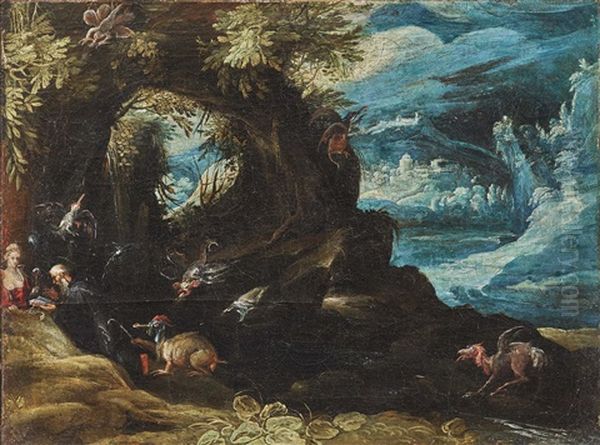
Through his frescoes, cabinet paintings, and prints, Bril shaped the tastes of patrons and influenced a multitude of artists, including key figures like Claude Lorrain, Peter Paul Rubens, and the Dutch Italianates. He elevated the status of landscape painting, demonstrating its capacity for conveying mood, narrative, and idealized beauty. His work remains a testament to the power of cross-cultural artistic dialogue and his enduring contribution to the evolution of landscape painting from the late Renaissance into the Baroque era. His paintings, found today in major museums like the Vatican Museums, the Louvre, the Pitti Palace, and the Getty Museum, continue to enchant viewers with their blend of detailed observation and poetic idealization.